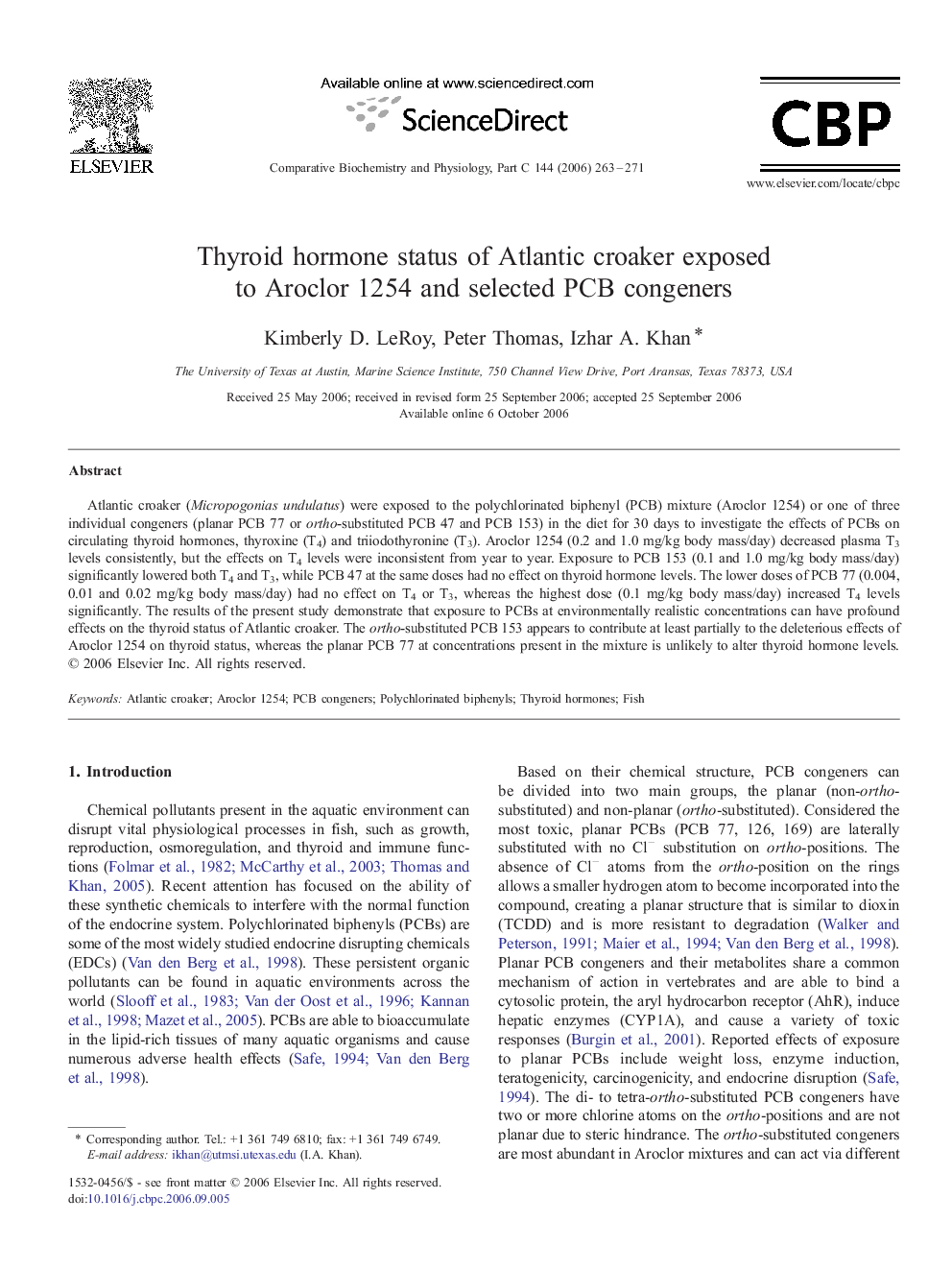| Article ID | Journal | Published Year | Pages | File Type |
|---|---|---|---|---|
| 1978049 | Comparative Biochemistry and Physiology Part C: Toxicology & Pharmacology | 2006 | 9 Pages |
Abstract
Atlantic croaker (Micropogonias undulatus) were exposed to the polychlorinated biphenyl (PCB) mixture (Aroclor 1254) or one of three individual congeners (planar PCB 77 or ortho-substituted PCB 47 and PCB 153) in the diet for 30Â days to investigate the effects of PCBs on circulating thyroid hormones, thyroxine (T4) and triiodothyronine (T3). Aroclor 1254 (0.2 and 1.0Â mg/kg body mass/day) decreased plasma T3 levels consistently, but the effects on T4 levels were inconsistent from year to year. Exposure to PCB 153 (0.1 and 1.0Â mg/kg body mass/day) significantly lowered both T4 and T3, while PCB 47 at the same doses had no effect on thyroid hormone levels. The lower doses of PCB 77 (0.004, 0.01 and 0.02Â mg/kg body mass/day) had no effect on T4 or T3, whereas the highest dose (0.1Â mg/kg body mass/day) increased T4 levels significantly. The results of the present study demonstrate that exposure to PCBs at environmentally realistic concentrations can have profound effects on the thyroid status of Atlantic croaker. The ortho-substituted PCB 153 appears to contribute at least partially to the deleterious effects of Aroclor 1254 on thyroid status, whereas the planar PCB 77 at concentrations present in the mixture is unlikely to alter thyroid hormone levels.
Related Topics
Life Sciences
Biochemistry, Genetics and Molecular Biology
Biochemistry
Authors
Kimberly D. LeRoy, Peter Thomas, Izhar A. Khan,
